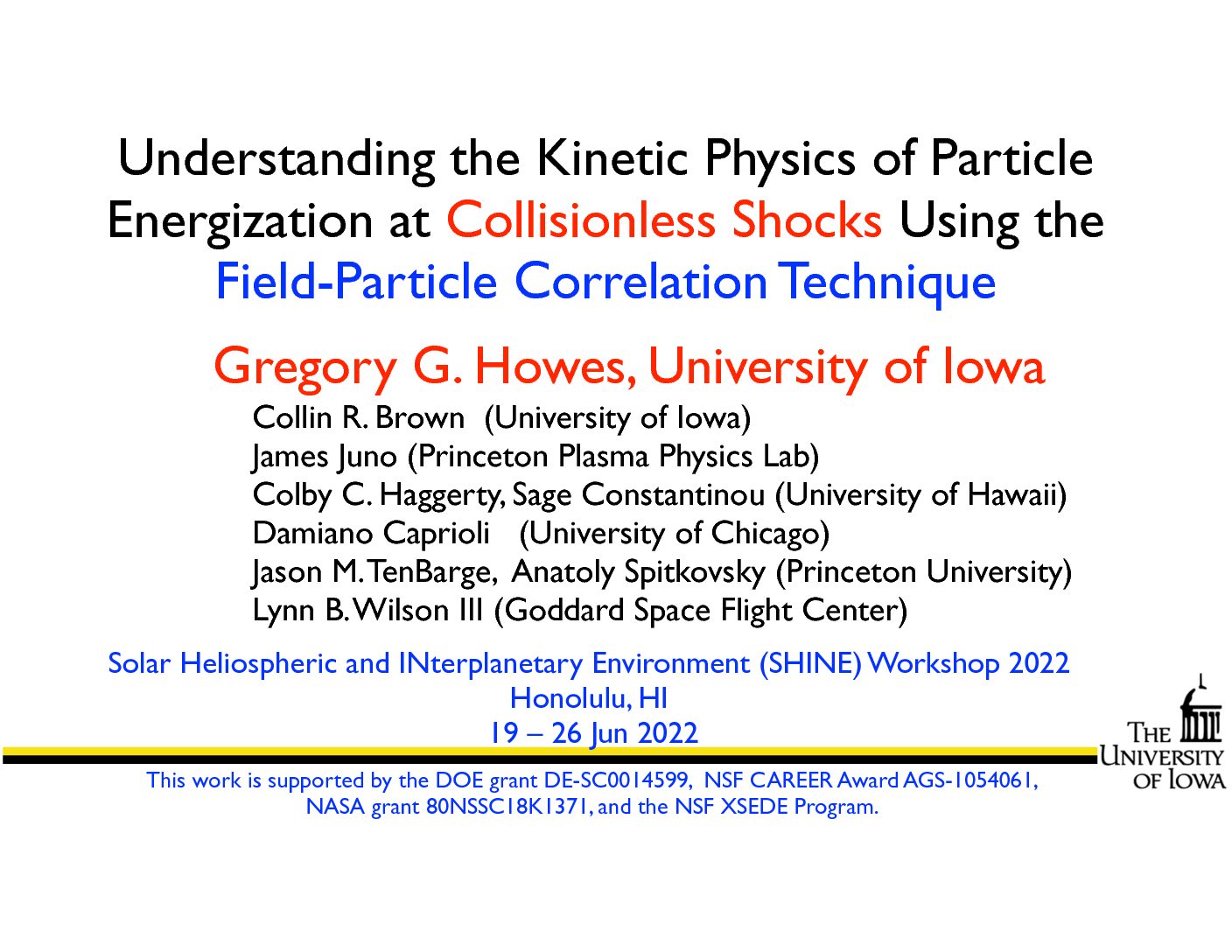Authors: Gregory G. Howes (U Iowa), James Juno (PPPL), Collin R. Brown (U Iowa), Colby C. Haggerty (U Hawaii), Jason M. TenBarge (Princeton U), Damiano Caprioli (U Chicago), Anatoly Spitkovsky (Princeton U), Lynn B. Wilson III (NASA Goddard)
Collisionless shocks play an important role in the conversion of supersonic flow energy to thermal energy at important boundaries in the heliosphere, such as at planetary bow shocks, the termination shock in the outer heliosphere, and interplanetary shocks propagating through the solar wind. In addition, collisionless shocks can lead to the acceleration of a small fraction of particles to high energy. Many of these energization mechanisms remain poorly understood, but kinetic simulations and spacecraft observations present valuable opportunities to improve our understanding of the fundamental kinetic physics. The recently developed field-particle correlation technique was devised to identify and characterize the mechanisms that energize particles in the six-dimensional (3D-3V) phase space of kinetic plasmas—such mechanisms underlie the fundamental plasma processes of kinetic turbulence, collisionless magnetic reconnection, collisionless shocks, and kinetic instabilities. Here we present an overview of how the field-particle correlation method can be applied to gain deeper insight into the kinetic plasma processes that govern how particles are energized at collisionless shocks. Requiring only single-point measurements in space, the technique can be used to identify well-known acceleration mechanisms, such as shock drift acceleration and shock surfing acceleration. In addition, it shows promise to be able to separate the energization mediated by micro-instabilities arising in the shock transition from that due to the macroscopic shock fields.


